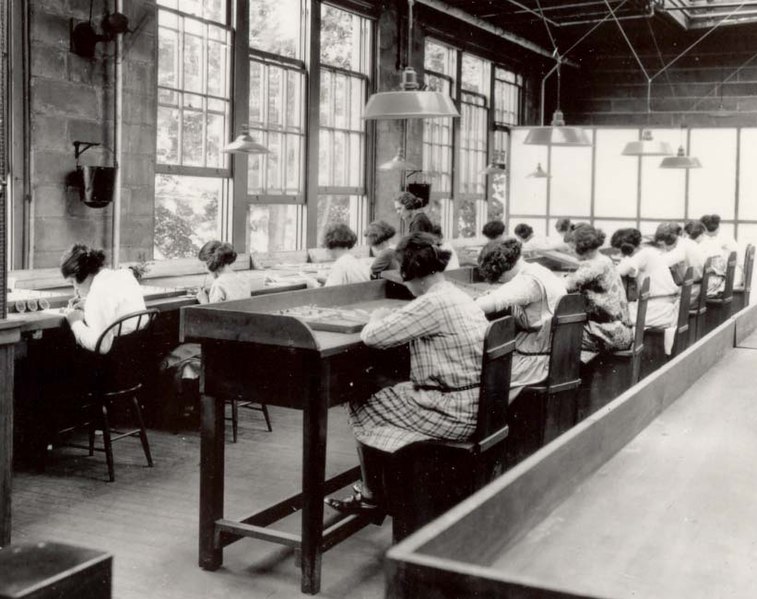Summary | Excerpt | Reading Guide | Reviews | Beyond the Book | Read-Alikes | Genres & Themes | Author Bio

Critics' Opinion:
Readers' Opinion:
First Published:
Feb 2021, 176 pages
Paperback:
Nov 2022, 176 pages
 Book Reviewed by:
Book Reviewed by:
Nichole Brazelton
Buy This Book
This article relates to Zorrie
 In Laird Hunt's book Zorrie, the title character takes a job painting watch dials with illuminating radium in Ottawa, Illinois. The women employed by the company think it's great fun to glow all night after their shifts, and even smuggle extra vials of glow-in-the-dark paint home to create designs on themselves.
In Laird Hunt's book Zorrie, the title character takes a job painting watch dials with illuminating radium in Ottawa, Illinois. The women employed by the company think it's great fun to glow all night after their shifts, and even smuggle extra vials of glow-in-the-dark paint home to create designs on themselves.
During World War I, American factories that decorated watch and clock faces with radium opened in the Midwest and on the East Coast. All-female crews of workers were given the impression they were helping the war effort, and that the substance they were using was completely safe. The women holding these prized jobs (paying around three times more than a typical factory job) were often referred to as "ghost girls" for the luminous appearance that was caused by their contact with the radium, and are the focus of Kate Moore's The Radium Girls.
Employees were instructed to "point" the tips of their brushes by placing them between their lips. Believing that they were ingesting a chemical that was harmless, they complied and took pride in the social status afforded them by their glowing teeth, skin and nails. However, the owners and managers were all too aware of the potential dangers involved. The men running the factories or handling the substance generally avoided exposure by using protective equipment and tongs.
Ironically, when radium, a chemical element, was first discovered by Marie and Pierre Curie in 1898, it was touted as a treatment for cancer (as it could be helpful in shrinking tumors despite its dangers) and a general health tonic that could boost the immune system, increase energy and elevate male virility. In short order, there was no dearth of "radium infused" products on the market. Everything from chocolate bars to bread, from toothpaste to cosmetics, was quickly scooped up by people desperate to feel and look their best.
While the possible dangers of radium were known, the profit being made from the sale of luminous watches, as well as the numerous consumable products containing (and that claimed to contain) the element, proved too attractive for corporations to halt production. Furthermore, the effects of radium poisoning tended to develop over a matter of years, so for a period of time there seemed to be no provable link between radium exposure and health decline. But all of that soon began to change.
In 1922 —the same year the Radium Dial Corporation opened in Ottawa, Illinois — Mollie Maggia, an employee of the United States Radium Corporation in Orange, New Jersey, died from the horrific effects of radium poisoning. Her symptoms began as a series of teeth that required removal. Eventually, her body became so weak from the effects of the radium that her jaw bone disintegrated in her dentist's hand. She was the first known ghost girl to die from exposure to radium, but she was far from being the last.
Over the course of the next several years, hundreds of women who had worked in radium painting facilities across the United States began suffering symptoms from their exposure to the substance, and in numerous cases eventually died painful deaths. Many of the women sought compensation and some attempted to bring lawsuits against the companies they had worked for. The companies refused to accept liability and silenced the women through smear campaigns as well as falsified medical studies and reports.
It wasn't until 1928 that the ghost girls began receiving compensation and acknowledgment of wrongdoing with a court settlement in their favor. This vindication came too late for many, and even those who survived for decades after the plants closed often continued to be plagued with illness.
The last known ghost girl was Mae Keane, who died in 2014. Fortunately for Keane, she had disliked painting watch dials and her employers were dissatisfied with her work. She lasted only a few months at the Waterbury Clock Company in Connecticut before being fired in 1924. Even from working that short amount of time with radium, she suffered ill effects, losing all her teeth over the next two decades. She eventually battled both colon and breast cancer, but still survived to the age of 107.
Radium girls working in a factory of the United States Radium Corporation c. 1922, unknown photographer, via Wikimedia Commons
Filed under People, Eras & Events
![]() This "beyond the book article" relates to Zorrie. It originally ran in February 2021 and has been updated for the
November 2022 paperback edition.
Go to magazine.
This "beyond the book article" relates to Zorrie. It originally ran in February 2021 and has been updated for the
November 2022 paperback edition.
Go to magazine.





The Flower Sisters
by Michelle Collins Anderson
From the new Fannie Flagg of the Ozarks, a richly-woven story of family, forgiveness, and reinvention.

The House on Biscayne Bay
by Chanel Cleeton
As death stalks a gothic mansion in Miami, the lives of two women intertwine as the past and present collide.

The Funeral Cryer by Wenyan Lu
Debut novelist Wenyan Lu brings us this witty yet profound story about one woman's midlife reawakening in contemporary rural China.
Your guide toexceptional books
BookBrowse seeks out and recommends the best in contemporary fiction and nonfiction—books that not only engage and entertain but also deepen our understanding of ourselves and the world around us.